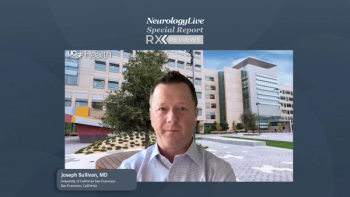The FDA granted 510(k) clearance for Zeto’s innovative next-generation product named ONE, a headset device that is equipped with 21 soft-tip electrodes positioned according to the commonly known 10-20 electroencephalography (EEG) system, according to a recent announcement.1 The company noted that the product, which is accompanied by intuitive LED feedback for any needed adjustment of the electrodes, requires minimal instruction for clinicians to use the device with their patients effectively.1
For clinicians who choose to use the portable device in their clinical practice, it can record video and audio from the patient while also providing a display for step-by-step guidance and recording controls. The headset device also offers clinicians the feature of live artificial intelligence (AI)-enabled notifications to alert them of seizure activity, which may be important when patients experience a status of critical condition or have an emergency event. The company noted that the device is approved for EEG brain monitoring across hospital, home, ambulance, and air transport environments.
"Zeto ONE is a breakthrough EEG system, revolutionizing many aspects of emergency EEG acquisition. We know that up to 40% of brain–injured emergency department and intensive care patients may experience seizures, which are often subclinical and require EEG for diagnosis,” Susan Herman, MD, professor and vice chair of clinical affairs in the department of neurology at Barrow Neurological Institute, said in a statement.1 “ONE fills a gap for hospitals that lack EEG resources—[it] provides streamlined point-of care application of full 10-20 electrodes, video and audio recording, AI triage tools, and efficient connectivity to the interpreting neurologist. This enhanced workflow ensures that EEGs have high technical quality and accurate interpretations in our most critically ill patients."
READ MORE: Cognitive Behavioral Therapy for Insomnia Shows Promise in Pilot Trial of Epilepsy
Top Clinical Takeaways
- Zeto's ONE headset offers a portable, easy-to-use EEG monitoring solution with 21 soft-tip electrodes.
- The device includes AI-enabled notifications for seizure activity and streams data to the Zeto Cloud for remote interpretation by neurologists.
- The ONE headset is approved for use in various settings, including hospitals, homes, ambulances, and air transport.
The company noted that ONE streams data to the Zeto Cloud, which is what allows for that live remote interpretation. Besides its role as a point-of-care system, ONE also serves as a broad-based EEG platform that allows clinicians to perform several tasks, including management of their workflow, scheduling appointments for their patients, and any report generation. Since the headset is adjustable, the company noted that the product can stretch to accommodate head sizes from adults to pediatric patients, and has a low-profile design to make it more comfortable for patients lying down during monitoring.
"Breakthrough changes arise from the cumulative effect of years of gradual improvements. ONE is a culmination of 8-plus years of customer-centric product development by our industrious team,” Aswin Gunasekar, MBA, MS, founder and CEO at Zeto, said in a statement.1 “As our first-generation Wrap (WR19) headset sees increasing adoption for short-term EEGs, ONE strengthens our portfolio by democratizing access to continuous EEG brain monitoring and diagnostics. We anticipate ONE to notably advance EEG monitoring in critical care, outpatient, and home settings."
In clinical practice, healthcare professionals recognize that EEG needs are significantly unmet because of a shortage of trained EEG technologists. Thus, newer products with the ability to monitor EEG will need to be easy to use for any provider, comfortable for all patients, and provide good signal quality. At the same time, hospitals will need comprehensive full montage EEG for coverage of medically significant events, video capabilities to assist clinicians with interpretation, and dependable diagnostic software for neurological emergency situations.2,3 These elements are significant for the continued progress of providing quality care for patients with neurological conditions, according to Zeto.1
"Zeto ONE will be a profound help to our pediatric patients by increasing access to much-needed diagnostic and therapeutic interventions, particularly in Emergency Departments and Intensive Care Units where rapid application and complete EEG can make all the difference in getting a critically ill child the care they need,” Christina Patterson, MD, associate professor of pediatrics and the director of the Epilepsy Center at UPMC Children's Hospital of Pittsburgh, said in a statement.1
"Many hospitals in the world have no ability to obtain EEGs," Robert S. Fisher, MD, PhD, director of the Stanford Epilepsy Center, said in a statement.1 "Zeto ONE will make it possible for them to do so. For hospitals and offices with EEG capabilities, ONE will make obtaining the EEG more efficient for the medical personnel and more comfortable for the patients."
Fisher predicted some of these technology-focused changes in care at the 2018 American Epilepsy Society’s (AES) Annual Meeting, held in New Orleans, Louisiana, where he sat down with NeurologyLive® to discuss the activities of epileptologists and explain that things are likely to change because of substantial advances in machine learning. One area in particular that he highlighted as likely change was the reading and interpreting of EEGs. Although he concluded that providers won’t be obsolete in epilepsy care in the next couple of decades, their tasks will be much different. Fisher explained that the routine work in medicine will be greatly assisted by machines, so clinicians might have a greater hand in education, research, and prevention of epilepsy. Check out the video below for more of his insights.
REFERENCES
1. Zeto obtains FDA 510(k) clearance for its groundbreaking next-generation EEG brain monitoring product, ONE. News Release. Zeto. Published June 4, 2024. Accessed June 6, 2024. https://www.prnewswire.com/news-releases/zeto-obtains-fda-510k-clearance-for-its-groundbreaking-next-generation-eeg-brain-monitoring-product-one-302162697.html
2. Herman ST, Abend NS, Bleck TP, et al. Consensus statement on continuous EEG in critically ill adults and children, part I: indications. J Clin Neurophysiol. 2015;32(2):87-95. doi:10.1097/WNP.0000000000000166
3. Kolls BJ, Husain AM. Assessment of hairline EEG as a screening tool for nonconvulsive status epilepticus. Epilepsia. 2007;48(5):959-965. doi:10.1111/j.1528-1167.2007.01078.x



























